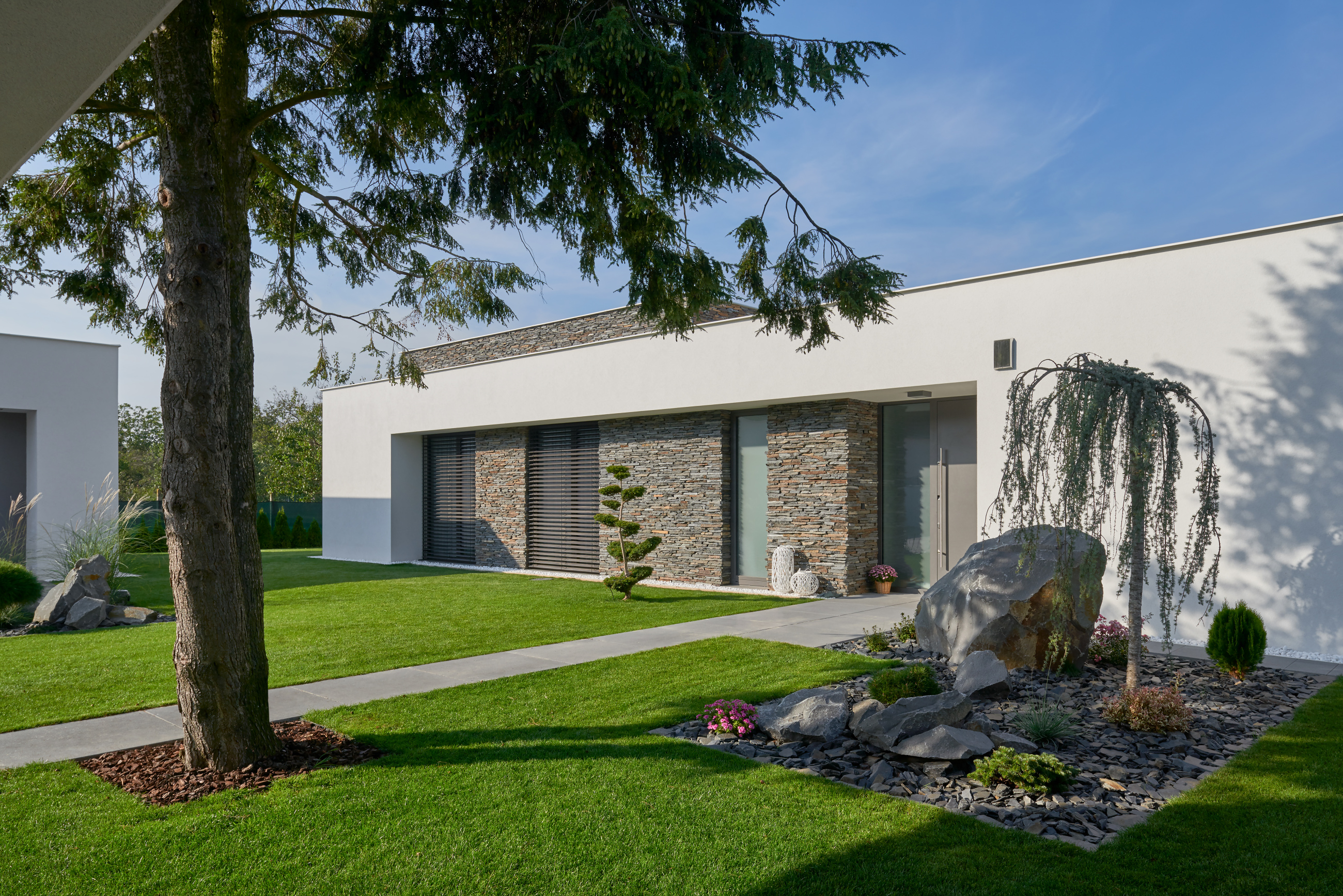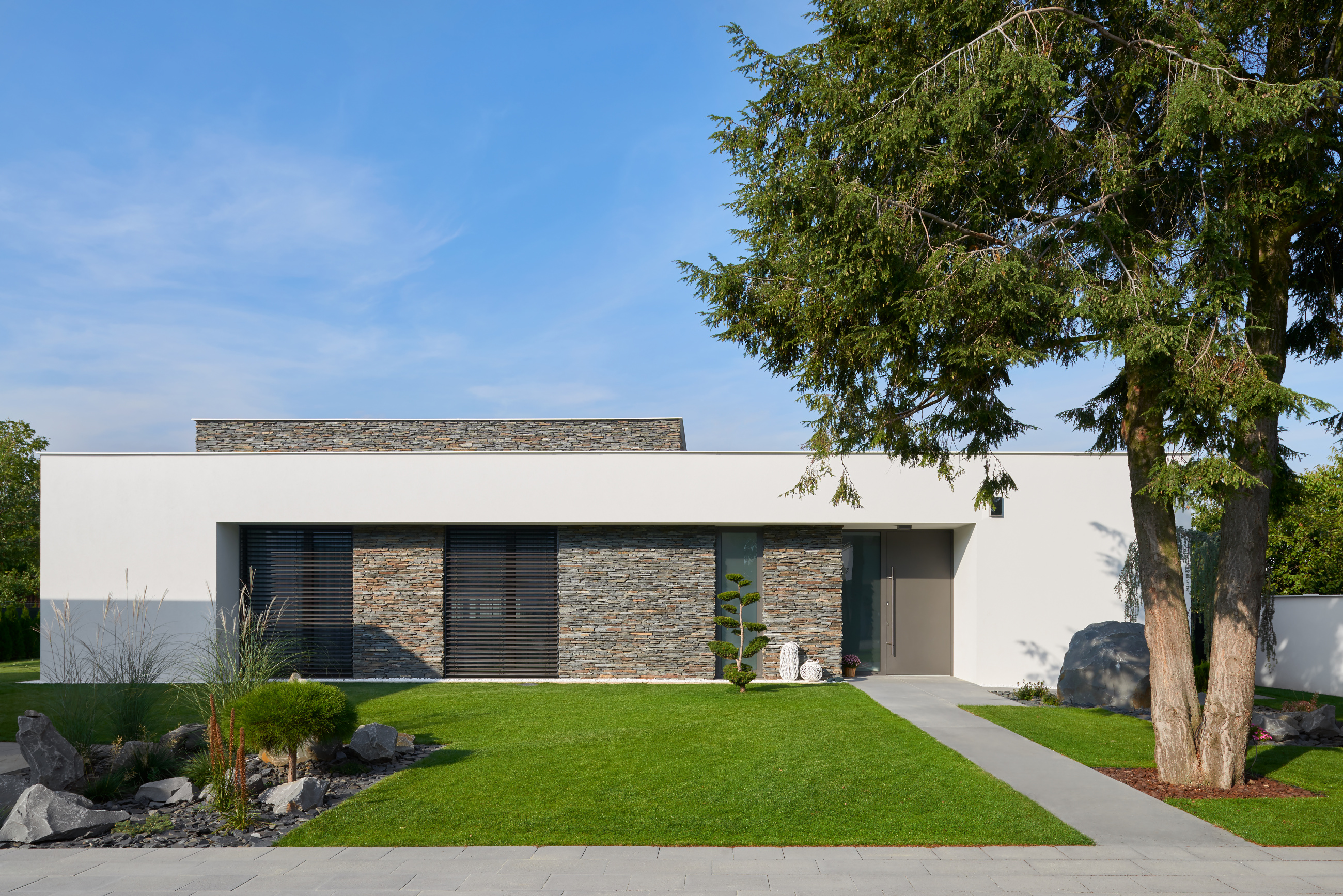
In the selection of blinds, the material of the facade, the shape of the house, and the connection with the interior are decisive, says architect Lánský
Outdoor shading can be found on almost all new buildings today. It affects the comfort of living and also creates an important detail of the house's appearance. We interviewed architect Tomáš Lánský from Brossini Design about current trends and what he considers when selecting shading while designing homes for his clients.
What factor do you take into account the most when designing shading for your clients' projects?
We always consider mainly the climate inside the house. When building a family home in a sunny location and planning large glazed windows, shading is absolutely essential. Otherwise, the interior would overheat.
Do you recommend internal or external shading?
Unless our client insists on a different solution, we always propose external shading. It blocks a lot of sunlight and heat outside, so it doesn't enter the house at all. Internal shading doesn't help with that – it does slow down the heat to some extent, but only after it has entered the room.
What type of external shading is the most popular?
From my experience, it is external blinds; we install them on 99% of our clients' buildings. They have all the advantages: they are much nicer to look at, and you can regulate the shading by tilting the slats exactly how you want. In my opinion, the only advantage of external roller blinds is that they provide a security element that protects against burglars. Otherwise, everything tends to favor external blinds.
Does the choice of external shading depend on the surrounding landscape or neighboring buildings?
Both play a role more in the design of the house. Neighboring buildings and their height, or roof type, influence whether the building will fit in with the architectural style of the area. The surrounding landscape is important when the house is in an extreme location, for example, in a field where there is strong wind. Then we would design the blinds to have a weather sensor that would raise the slats if it got too windy. However, such cases are exceptions. When choosing blinds, color and design play a more significant role.
How do you choose the color of the slats?
There are many variables involved: the color and material of the facade, roof type, color of the roofing tiles, or the shape of the house. It’s about the overall appearance of the building, ensuring that all elements harmonize. The shade of window profiles is also important – it often happens that the color of the blinds matches the color of the windows. However, it always depends on the aesthetic sensibilities of the architect or the homeowner.
What colors are currently most popular?
When I look at the buildings we have worked on in recent years, the dominant color is anthracite. People choose it for window frames and usually want the slats and accessories of the blinds in the same or similar shade. However, this might be biased by the style of buildings we design at Brossini Design – anthracite simply suits them well.
Does the shape of the slats also matter from an architectural perspective?
We usually propose a Z-profile to our clients. We would consider another variant only if the client had other requirements, for example, for special slat tilting. In that case, I would call the technicians from NEVA, our blinds supplier, to get advice on whether another type of slat would be more suitable from a practical standpoint than Z-90. The people at NEVA are great in this regard; they have extensive knowledge of blinds and can provide guidance.
What else influences the choice of external shading from an architectural perspective?
For example, mounting options – the best solution for us has proven to be installation under the facade, where all anchoring elements are hidden and, unlike a protruding box, do not disrupt the architecture of the house. However, for such a solution, we prepare the house during the design documentation.
Do you also consider the interior of the house?
Definitely, the connection between the exterior and interior is something we address, for example, when selecting a motor for controlling the blinds. Often, you need to install control panels on the walls in individual rooms. However, this doesn't look very nice in the interior. Therefore, we mostly use smart motors that you control via an app remotely, significantly reducing the need for buttons on the walls.
 |
What factor do you take into account the most when designing shading for your clients' projects?
We always consider mainly the climate inside the house. When building a family home in a sunny location and planning large glazed windows, shading is absolutely essential. Otherwise, the interior would overheat.
Do you recommend internal or external shading?
Unless our client insists on a different solution, we always propose external shading. It blocks a lot of sunlight and heat outside, so it doesn't enter the house at all. Internal shading doesn't help with that – it does slow down the heat to some extent, but only after it has entered the room.
What type of external shading is the most popular?
From my experience, it is external blinds; we install them on 99% of our clients' buildings. They have all the advantages: they are much nicer to look at, and you can regulate the shading by tilting the slats exactly how you want. In my opinion, the only advantage of external roller blinds is that they provide a security element that protects against burglars. Otherwise, everything tends to favor external blinds.
 |
| Architects from Brossini Design designed this family house and shaded it with Z-90 blinds. |
Does the choice of external shading depend on the surrounding landscape or neighboring buildings?
Both play a role more in the design of the house. Neighboring buildings and their height, or roof type, influence whether the building will fit in with the architectural style of the area. The surrounding landscape is important when the house is in an extreme location, for example, in a field where there is strong wind. Then we would design the blinds to have a weather sensor that would raise the slats if it got too windy. However, such cases are exceptions. When choosing blinds, color and design play a more significant role.
How do you choose the color of the slats?
There are many variables involved: the color and material of the facade, roof type, color of the roofing tiles, or the shape of the house. It’s about the overall appearance of the building, ensuring that all elements harmonize. The shade of window profiles is also important – it often happens that the color of the blinds matches the color of the windows. However, it always depends on the aesthetic sensibilities of the architect or the homeowner.
What colors are currently most popular?
When I look at the buildings we have worked on in recent years, the dominant color is anthracite. People choose it for window frames and usually want the slats and accessories of the blinds in the same or similar shade. However, this might be biased by the style of buildings we design at Brossini Design – anthracite simply suits them well.
 |
Does the shape of the slats also matter from an architectural perspective?
We usually propose a Z-profile to our clients. We would consider another variant only if the client had other requirements, for example, for special slat tilting. In that case, I would call the technicians from NEVA, our blinds supplier, to get advice on whether another type of slat would be more suitable from a practical standpoint than Z-90. The people at NEVA are great in this regard; they have extensive knowledge of blinds and can provide guidance.
What else influences the choice of external shading from an architectural perspective?
For example, mounting options – the best solution for us has proven to be installation under the facade, where all anchoring elements are hidden and, unlike a protruding box, do not disrupt the architecture of the house. However, for such a solution, we prepare the house during the design documentation.
Do you also consider the interior of the house?
Definitely, the connection between the exterior and interior is something we address, for example, when selecting a motor for controlling the blinds. Often, you need to install control panels on the walls in individual rooms. However, this doesn't look very nice in the interior. Therefore, we mostly use smart motors that you control via an app remotely, significantly reducing the need for buttons on the walls.
|
Tomáš Lánský has been working as an architect for 14 years. He studied at the Faculty of Civil Engineering at the Technical University of Ostrava, where he worked in an architectural office that specialized in interiors even while studying. Gradually, he specialized in the architecture of family houses. He currently works at the family business Brossini Design in Prostějov, focusing on the design and realization of interiors and exteriors. |
The English translation is powered by AI tool. Switch to Czech to view the original text source.
0 comments
add comment
Related articles
0
18.04.2021 | How does the method of installing outdoor blinds influence the appearance of the house?
0
13.02.2021 | How to design a well-cooled house even without air conditioning
0
19.11.2020 | In Malmö, a new hospital complex has been inaugurated. It considers the health of patients as well as the environment
0
02.11.2020 | Aluminum vs. wooden outdoor blinds: aluminum is more durable, while wood feels warmer
0
12.10.2020 | How do the world's sides affect the layout design of an apartment?
0
04.08.2020 | Z, S or C? How to choose the shape of the slat for outdoor blinds according to the type of house or window
0
01.07.2020 | What color for outdoor blinds? Lighter shades are more practical
0
25.05.2020 | Expert advises: how to overshadow architecturally exceptional buildings
0
25.03.2020 | In the shadowing market, outdoor blinds dominate. The most popular are silver ones.












